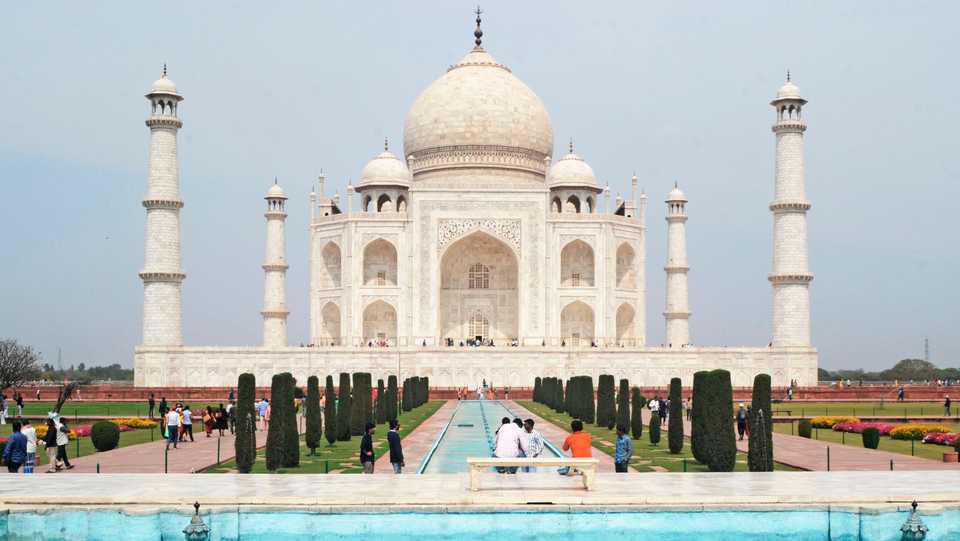
The Taj Mahal reopens to visitors in a symbolic business-as-usual gesture, even as India looks set to overtake the US as the global leader in coronavirus infections.
India, home to 1.3 billion people and some of the world’s most crowded cities, has recorded more than 5.4 million Covid cases. Around 100,000 new infections and over 1,000 deaths are reported daily.
But after a strict lockdown in March that devastated the livelihoods of tens of millions of people, Prime Minister Narendra Modi is reluctant to copy some other nations and tighten the screw on activity again.
Instead in recent months his government has eased more and more restrictions including on many train routes, domestic flights, markets, restaurants — and now, visiting the Taj Mahal.
READ MORE: Brazil reports over 16,000 new daily cases – latest updates
The world-famous white marble mausoleum in the city of Agra south of New Delhi is India’s most popular tourist site. It usually draws seven million visitors a year, but has been closed since March.
Officials say that when it reopens, strict social distancing rules will be imposed and daily visitor numbers will be capped at 5,000 — a quarter the normal rate. Tickets can only be bought online.
“Circles are being marked, the mask would be a must and nobody would be able to enter without thermal screening,” Vasant Swarnkar, a senior archaeologist in charge of Agra’s monuments, told reporters.
‘Lockdown fatigue’
Elsewhere however, particularly in rural areas where infections are soaring, anecdotal evidence suggests that government guidelines on avoiding the virus are more often ignored than adhered to.
READ MORE: India’s economic growth nosedives after virus lockdown
“I think, not just in India but all over the world, fatigue with extreme measures that were taken to restrict the growth of the coronavirus is setting in,” said Gautam Menon, professor of physics and biology at Ashoka University, predicting that infections will keep rising as a result.
Many experts say that even though India is testing more than a million people per day, this is still not enough and the true number of cases may be much higher than officially reported.
The same goes for deaths, which currently stand at more than 86,000, with many fatalities not properly recorded even in normal times in one of the world’s worst-funded healthcare systems.
There is however some resistance to Modi’s unlocking of the world’s second-most populated country, which saw its economy contract by almost a quarter between April and June.
Schools were meant to resume Monday on a voluntary basis for students aged 14 to 17, but many Indian states such as Maharashtra and Gujarat have said it is still too soon.
“Cases are still increasing rapidly… I have no idea how we can reopen educational institutions now,” West Bengal’s education minister Partha Chatterjee said.
Elsewhere schools are refusing to open or parents are wary of sending their children in.
“I am prepared for my son to lose an academic year by not going to school rather than risk sending him,” said Nupur Bhattacharya, the mother of a nine-year-old boy in Bangalore.
READ MORE: India ramps up testing, reports record number of new Covid-19 cases









Discussion about this post